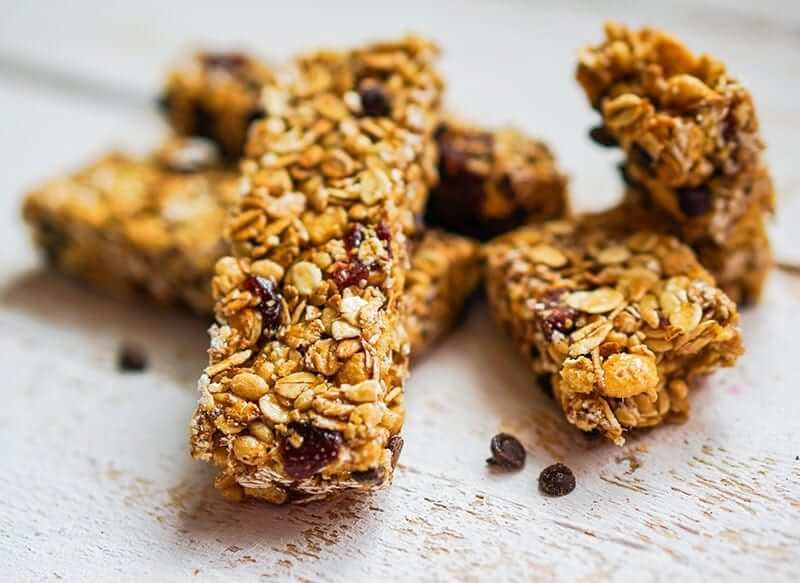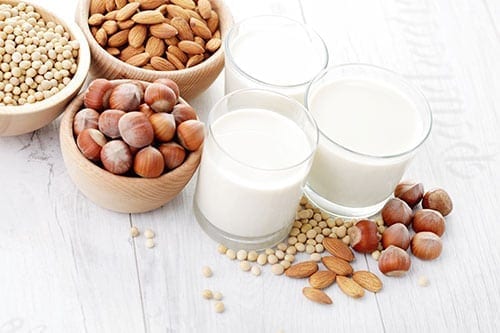Gone are the jumbo, chocolate hearts and kisses that lined the store isles back in February. Move on to mid-March, and you can see the candy products that line the grocery, pharmacy and big box stores have morphed. Walking into the stores you see enormous chocolate bunnies, marshmallow /caramel filled Easter eggs (or chicks), sugar laden Easter peeps in yellow, green and pink along with a wide assortment of colored jelly beans or gummy bunnies all in preparation for the Easter Holiday.
This season is tough enough, but when you add diabetes to the mix, “holiday treats” can become even more frustrating. Sweets are the first taste we prefer from birth. Carbohydrates stimulate the “release of serotonin, one of the feel-good brain chemicals.” Brain chemicals or neurotransmitters tell your body how to feel emotionally and physically. Carbohydrates turn to sugar, plain and simple. There are more than 50 names for sugar including: lactose, fructose, dextrose and maltose.
Eating too much sugar does not cause diabetes, but eventually it causes weight gain which leads to insulin resistance and possible type 2 diabetes. Not all carbohydrates are equal since whole grains, fruits and starchy, vegetables have fiber which slows the breakdown into sugar and prevents blood sugar spikes. Your body needs some sugar for proper cell function and without eating any sugar at all, which your brain needs, you can lose conscientious and even encounter cell death. Let’s look at how to cope with sugary, Easter candy, cravings and what to do to maintain blood sugars.
How Do I Get Through Easter When I or Someone That I Know Has Diabetes?
Don’t look for the life-sized chocolate bunny on the candy shelf. Don’t purchase solid chocolates or filled chocolates. Look for hollow, small, individually wrapped eggs, bunnies or chicks preferably in dark chocolate. Think about gifts that do not center around the traditional Easter candy basket. Find fun and exotic foods such as special cooking oils and vinegars for adults. Special tea bag sets are a prefect alternative easter gift. Look for ginger or turmeric tea for added health benefits. Give a frame for a family Easter picture. Buy an Easter lily plant.
Find fun and exotic foods such as fruit or vegetables that you can dress up for kids. Think about colorful, plastic eggs and fill with small toys, stickers, confetti or a gift card. Buy books about the story of Easter and read together as a family. Dye and hand paint real hard-boiled eggs together as a family and hide them around the lawn. Get everyone to walk 20 minutes before looking for the eggs and prizes. Make an egg white Easter omelet with lots of vegetables and a bit of cheese. Dip fresh strawberries in dark chocolate for a delicious treat. Add whole grain toast. Do try to avoid sugar free chocolate bunnies or eggs, especially if you over-indulge. Sugar-free chocolate is not calorie free or carbohydrate free. It contains sugar alcohol which may cause a laxative effect if eaten in large amounts.
What Does the Average American Eat in Terms of Daily Sugar?
According to the American Heart Association, “people in the US ingest 19-22 teaspoons of added sugar daily on top of the naturally occurring sugar in our diet.” This amounts to 300-350 excess calories a day.
Is Sugar Really That Addicting?
Sugar tastes good and many people feel addicted to it which is somewhat true. Sugar activates taste receptors that then send signals to start a series of events. Both serotonin and dopamine pathways are activated and the more of these neurotransmitters, the better you feel. It becomes a “catch 22” since the more you trigger the receptors the more they become desensitized and require more and more sugar for the same feeling. Eating sugary and fatty foods and drinks may be needed to feel good.
Where Does Dark Chocolate Fit In?

Can Sugar Really Have Such a Detrimental Effect?
Other than raising your blood sugars, sugar does have a detrimental effect to your body. “A high sugar diet can cause oxidative stress which can eventually damage our cells. It influences memory and learning abilities. Brain inflammation is a byproduct of a high sugar diet and too much sugar in the diet may cause dementia and/or Alzheimer’s” – According to studies done at Perdue University. Sugar is also associated with depression, anxiety, headaches and cravings, especially when you are trying to break the vicious cycle and wean yourself off sugar. Sugar withdrawal is real.
Chronic Low-Grade Inflammation
Sugary foods, trans-fats, processed foods and saturated fats are all known to lead to low level chronic inflammation. Being over-weight, obese, stressed, having a low personal gut biome, arthritis and high alcohol consumption can add to that inflammation. Research continues to grow suggesting that “chronic inflammation contributes to cancer, diabetes, heart disease and dementia.”
Processed Grains and Other Foods to Avoid
Cravings for bagels, muffins, chips, French fries, pretzels, micro-waved popcorn which are all carbohydrates and all turn to sugar is no different than sweets/candy/cookies/cake cravings. The fiber layer or outer layer known as bran is removed which allows the processed grains to be digested and absorbed quickly leading to blood sugar spikes. It is just like eating refined sugar from yellow peeps, marshmallow eggs and colorful jelly beans which can all raise blood sugars and then drain your energy. First comes the elevated blood sugars and insulin levels, followed by an energy drop.
Foods Other Than Easter Candy That Mess With Your Brain and Blood Sugar

Beverages, while most are not food related, are another “food” to watch. Watch out for fancy coffee drinks which are seasonal or limited time show up at almost every holiday. For example, you will see a molten chocolate frappiccino filled with rich chocolatey sugar around Valentines day. Another example would be the Zombie Frappiccino advertised around Holloween.
Foods including ketchup, BBQ sauce, jarred spaghetti sauce, bottled salad dressings, commercial cole slaw, or canned baked beans with molasses or brown sugar, all rival your yellow or pink Easter peeps and huge, solid chocolate bunnies! Store bought spaghetti sauce usually contains 2-3 teaspoons of added sugar in a half cup serving. If you skimp on the pasta and fill up on the sauce, then wonder why your blood sugars are off, its because of the store bought pasta sauce. Try to prepare your own tomato sauce with ripe tomatoes, olive oil, basil leaves and garlic. Simple, delicious and no sugar added.
A regular serving size of commercial salad dressing of 2 tablespoons adds an extra teaspoon of sugar to your healthy salad. Add a creamy dressing and then you have saturated fat AND sugar. Create your own dressing with extra virgin olive oil, red wine or Balsamic vinegar. Add a teaspoon of mustard and some garlic powder – again a no added sugar to start the sweet cravings cycle. Read labels to see the sugar/carbohydrate count and look for added/no added sugars.
Green tea remains the craze to fix just about anything including a way to burn calories for weight loss and fight inflammation heart disease and cancer. If you drink regular Arizona iced green tea, you are adding almost 12 teaspoons of sugar! Brew your own green tea using teabags or loose, green tea and then chilling in the refrigerator or purchase the sugar free variety if you really need that sweet taste. Even drinking mixed alcohol can add to the sugar addiction. Skip the sugary mixed drinks including Mud Slides, Pina Coladas with natural fruit juices, Daiquiris and Margaritas. Alcoholic drink mixes can add up to 5 teaspoons of sugar to your cocktail. Even plain, tonic water is loaded with sugar and calories. Add club soda or ice cubes instead.
Milk Alternatives

Vitamins & Supplements Too?
Many vitamins and supplements have added sugars, especially chewable vitamins and gummy vitamins. They contain corn starch, corn syrup or juice concentration. Capsules, liquids and tablets are usually a better bet but always read labels!
Can You Lower or Eliminate Sugar Easily?
Can you learn how to retrain your taste buds? Yes. Try to drop one sweet food from your eating plan daily. Pass on a dessert one day and the breakfast smoothie the next. Use less artificial sugars as well. Artificial sugars are sweeter than real sugar and make it difficult to break the “sweetness cycle.” Drink coffee black and tea with lemon. Drinks lots of plain water. Nibble on fresh veggies for crunch and chew. If you do eat a sugary food, add a protein food for balanced blood numbers. For example, eat a few nuts with a pear or apple. Cravings for sugar are real. Eat more protein. Go for a walk. Deep breathe. Don’t food shop when hungry or without a list. Listen to music when a sugar craving comes on. Call a friend. Talk a soothing bath. Go for a scenic drive. Write in a journal and later share your thoughts.
Have a question or comment? Then post below, no registration required. I would love to hear from you!
NOTE: Consult your Doctor first to make sure my recommendations fit your special health needs.








I’ve been a Type 1 diabetic since age 3 (I’m now 62) and only in the last few years have I managed to avoid the Easter-candy clearance sales. It was always so tempting to feel like “if I buy the chocolate at half-price that makes up for what I’m doing to my body!”